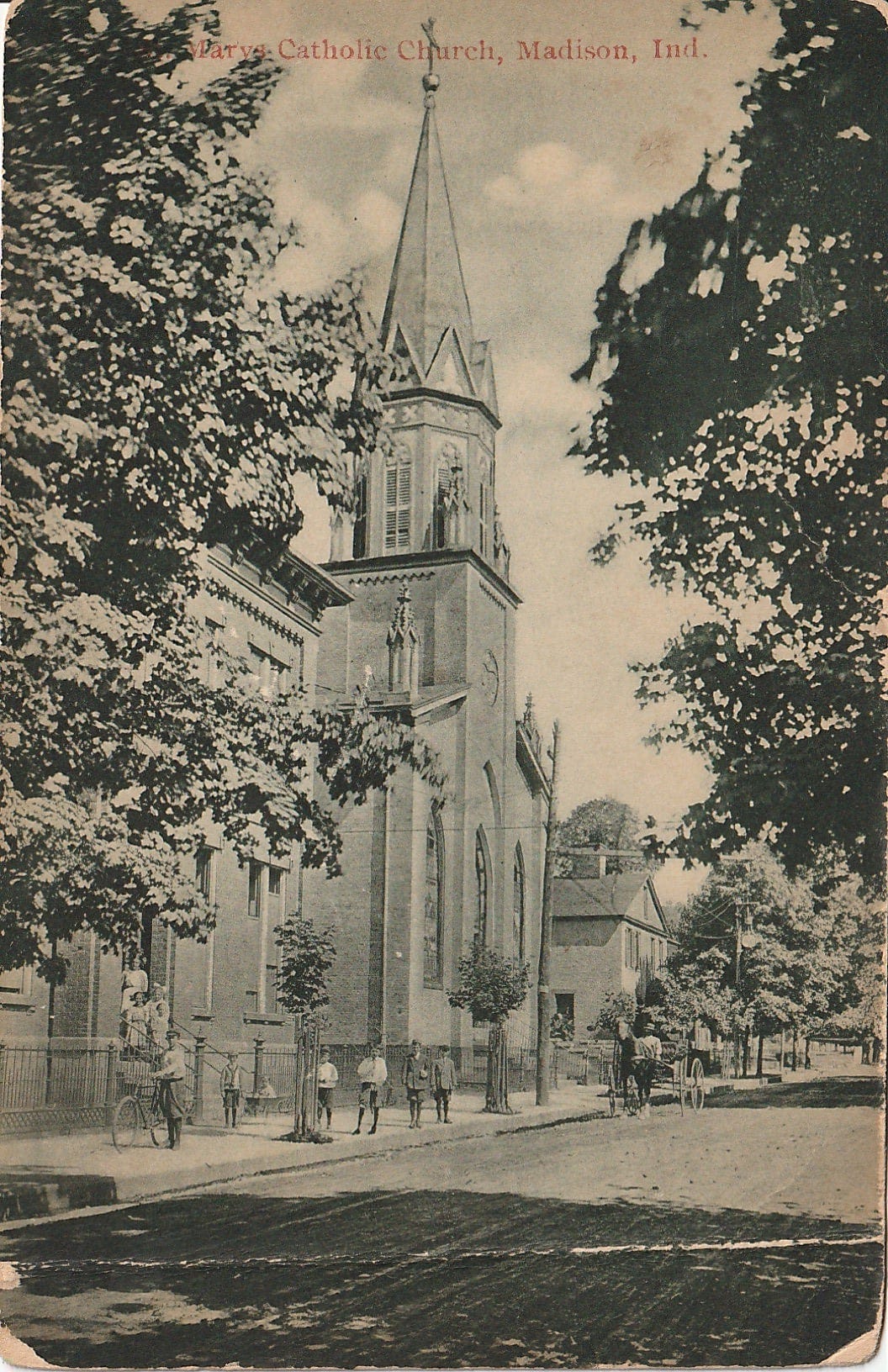This is a newsletter I sent out way back in November 2021, back when I had 100 subscribers, so quite a few of you won’t have seen it. At the time, it was the most popular post I’d written and everyone loves reading about old houses, right? Enjoy for the first time or all over again.
I live in a house that’s almost two hundred years old, but this is one of the rare things I don’t think too much about.
Partly, that’s because it’s one of those things I’ve come to take for granted. The winding stairs that meet no building code from this century and are effectively a glorified ladder? Just a quirk. The way the world looks a bit wavy and distorted out our living room window because the glass has run and warped over time? That’s not how the world looks to everyone? You get used to living in an old house and after a while, it’s just home. The hedonic treadmill all over again.
But I also don’t think about the age of our house that often because…well, you know,…[whispering] ghosts. I was never much of a ghost person until I saw The Sixth Sense. That movie is burned into my synapses and if the way it goes is that ghosts haunt the places where they died and people died in their houses quite frequently in the 19th century, then…yeah. Not thinking about that.
Not thinking about the fact that under those particular rules, there are probably some ghosts wandering around inside of our house. Not thinking about the strange footprints that showed up on the wood floors of our friends’ old house down the street. Definitely not thinking about the basement, which is not the scariest basement in downtown Madison, but not great, either.
This doesn’t mean I’m not curious about the history of the house. I know our house is in the big birds-eye view map of Madison that hangs in city hall and dates to 1887. There’s a postcard with the catholic church next door that has our house in the background, along with a horse and buggy parked in front of the church. A panoramic photo from the church’s jubilee in 1930 hangs in our living room, a black and white image of priests and kids in white dresses (for confirmation?) and, in the background, what looks like an old lady sitting on our front porch watching the festivities with what I like to imagine is a sly grin, like she’s winking at me from the depths of time. Maybe she’s one of the ghosts, reading this over my shoulder right now.
I’m thinking about ghosts and history because this week we went to a presentation at the public library on how to research the genealogy of your old house. The process starts with establishing a chain of title and expands out from there to tax records and wills and obituaries and big folders full of family history that our local historians have kindly collected over time.
Regardless of how deep you dig, what you’re looking for when you research the history of your house is the same thing you’re looking for when you research the history of your family. It’s the same thing we’re almost always looking for—a story. Preferably, a good story. Maybe someone famous who lived here or visited once. Or an explanation for the crazy stairs. I like to think the old lady on the porch in that picture has a few stories to tell. And, yes, maybe someone who died in the house, though hopefully not under violent or bloody circumstances.
When I do spend time thinking about the possibility of ghosts, I’m mostly agnostic on the subject. I don’t believe in ghosts, but I don’t not believe in ghosts either. I’m humble in the face of what I don’t know.
But leaving aside the paranormal sort of ghosts, as a sociologist, I understand that we all live with a different type of ghost all the time. As Faulkner said, “The past is never dead. It isn’t even past.” I’m always trying to think of metaphors for the connection between our individual lives and larger social structures that is the core of a sociological perspective. Ghosts are as good a metaphor as any.
We live with the ghosts of history floating around us all the time, mostly unseen. The ghosts of our racial history that have made small towns like Madison racially homogenous. The ghosts of economic and transportation history that combined to leave Madison behind in the transition from river transport to rail transport, preserving blocks of 19th century architecture like a fly in amber. The ghosts of radical changes in gender equality that allowed someone like me to get not just an education and a job, but to buy a home as a single woman, something that would have been largely unthinkable at the time my house was built.
Those sort of ghosts are everywhere and sometimes they’re every bit as scary as the Sixth Sense variety, if not scarier. They’re on city streets and suburban cul-de-sacs and even out in the “wilds” of nature. These ghost stories are even harder to unpack than the complicated histories of a two hundred year old building, but every bit as fascinating and important.





“The past is never dead. It isn’t even past”. Oh Faulkner, man, how right you are.
Cool piece, Robyn.
Wow! I can hardly even imagine. Living in a 200-year-old house. That’s really interesting!